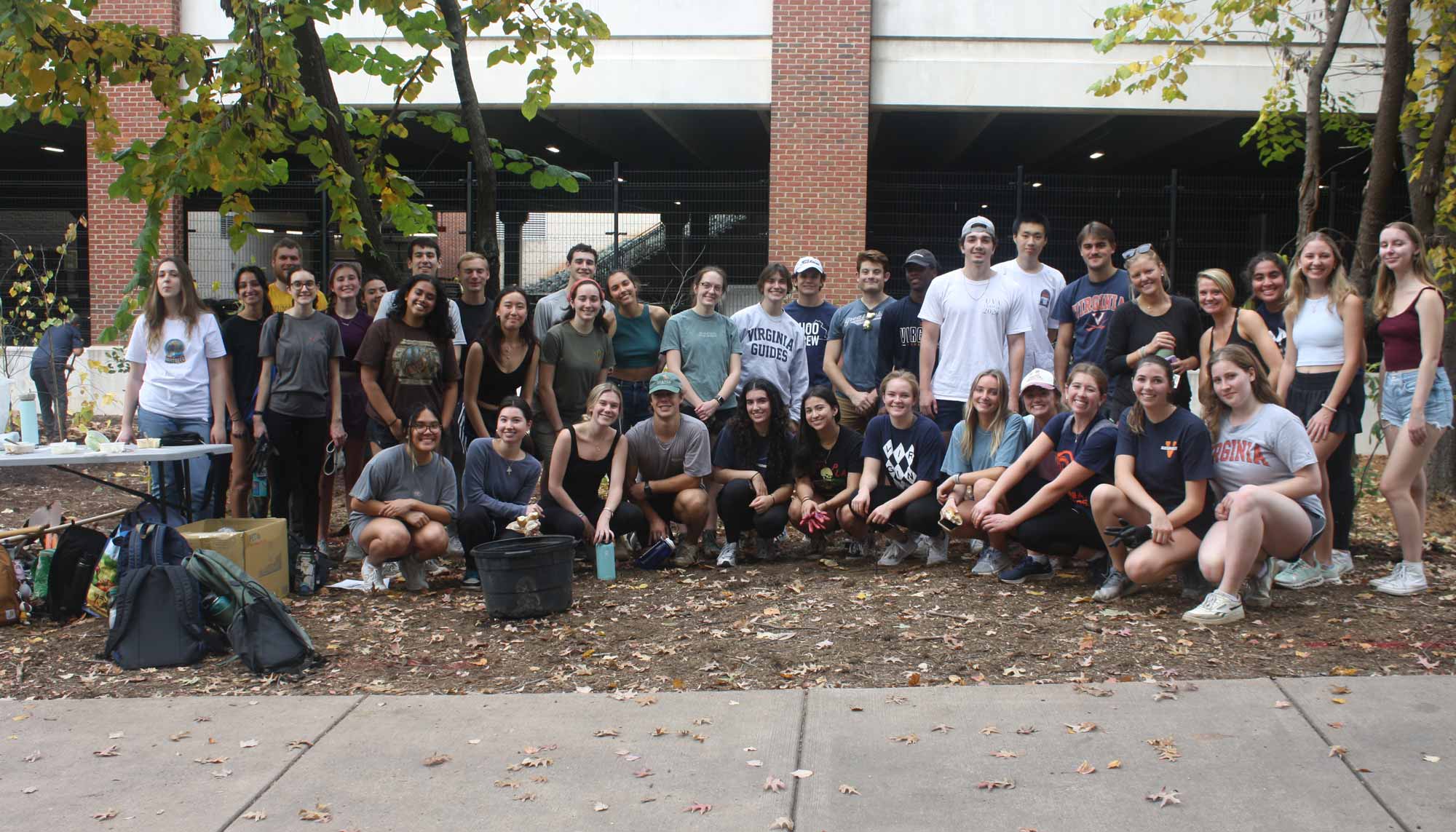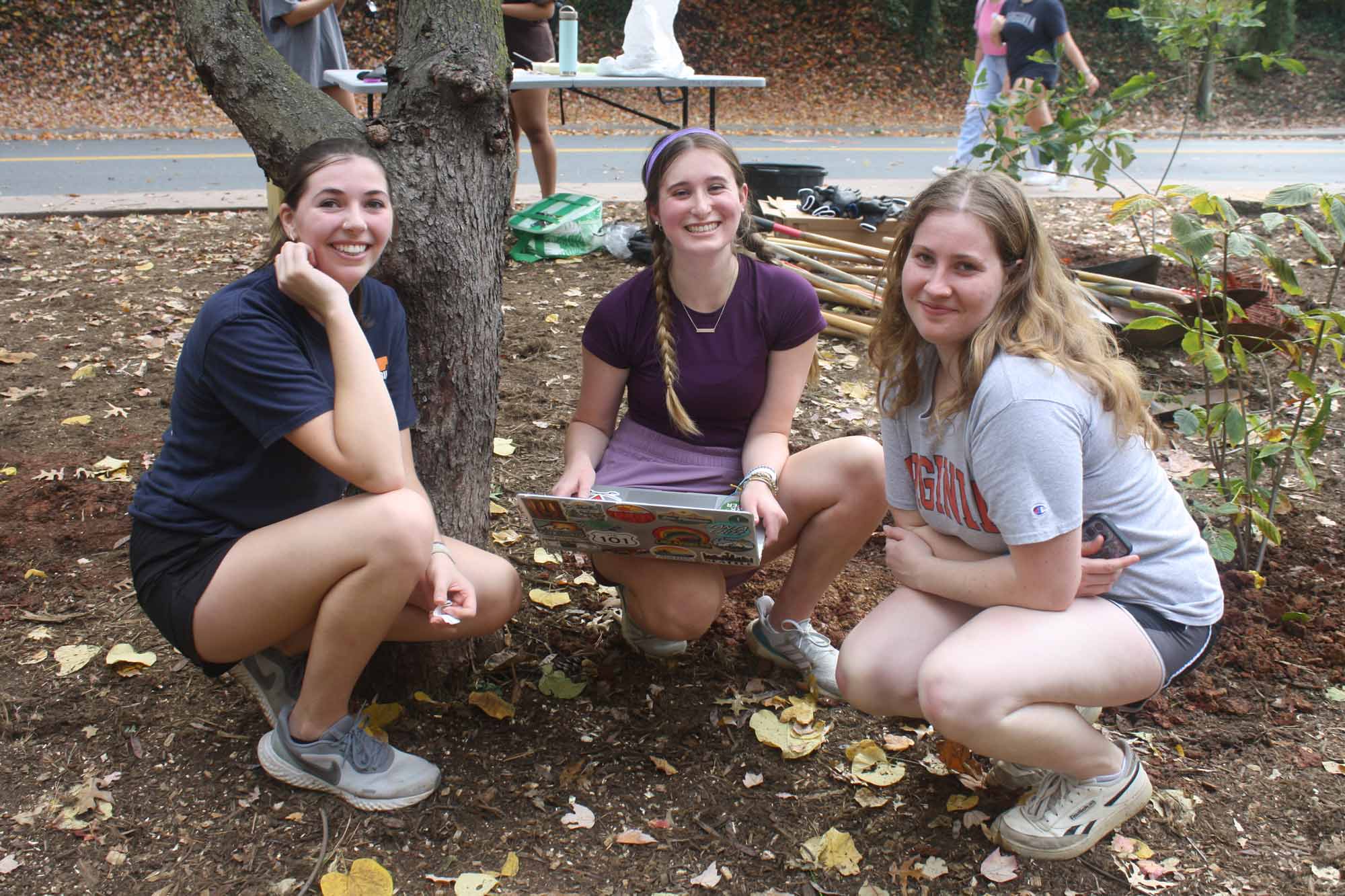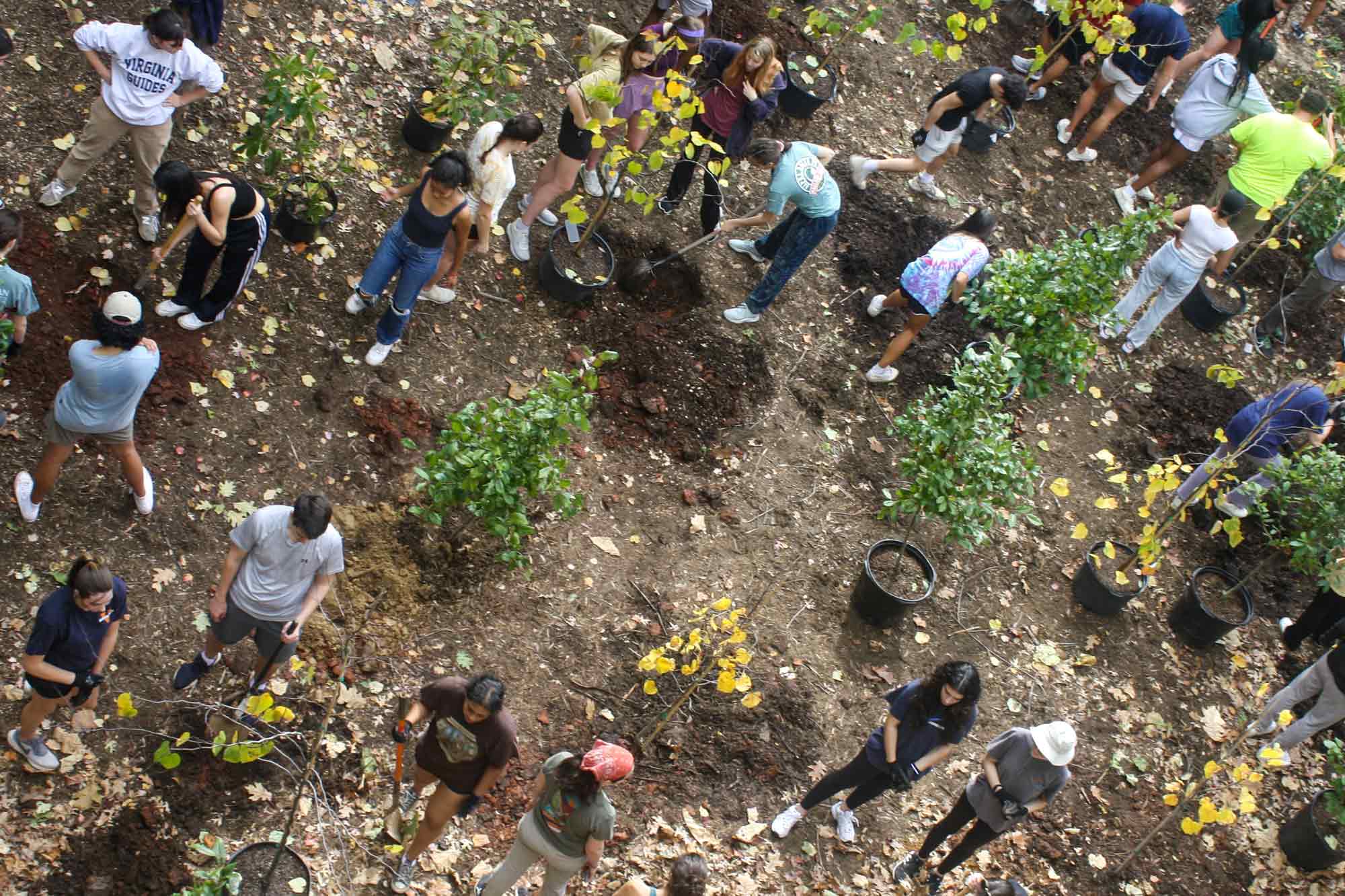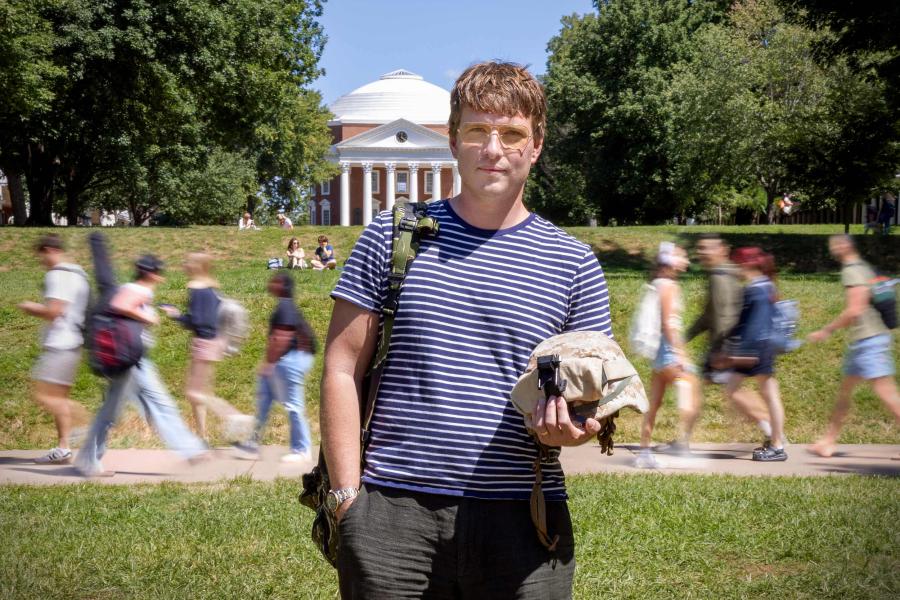On the edge of Scott Stadium, in a patch no bigger than a tennis court, surrounded by pavement and steel, grows a tiny forest of redbud, black tupelo, red buckeye, bee balm and rhododendron.
With the forest grows the hope of three University of Virginia students for a carbon-neutral future, a cooler planet and more beautiful Grounds.
“As climate change continues to cause irreversible environmental degradation, it is important to stand up for the planet that provides us with so many priceless ecosystem services,” said Madeline Morphis, a third-year architecture student.
Morphis and third-year student Leah Germain, an environmental science major; and fourth-year environmental sciences student Olivia Vargo chose the Scott Stadium site. They designed the little forest and led about 100 volunteers on a late October day in planting 80 trees and shrubs on the site.
The idea for the thicket came from the trio’s participation as research fellows in the UVA Committee for Sustainability’s summer Decarbonization+ Academy, an immersive sustainability learning experience for students interested in helping the University be carbon-neutral by 2030 and fossil fuel-free by 2050.
The academy pairs groups of students with faculty members to work on a variety of projects across multiple disciplines, including environmental science, engineering, urban planning and environmental history.
“Over the summer, our group, with professor Tim Beatley, researched urban forestry, especially Miyawaki-style forests, which are densely planted forests that can be as compact as a parking space,” Germain explained. “These dense forests are a tool for capturing and storing carbon without taking up much space.”
The small forest concept was pioneered by Japanese botanist Akira Miyawaki, who developed it to quickly create forest cover on land left barren by development. Densely planted native trees and bushes grow quickly in competition for water and sunlight and are best equipped for long-term survival.
The eight-week academy convinced the three to put what they learned into practice and into the ground.
“The Miyawaki method stood out to us because it is a quick, compact way to increase nature and biodiversity on Grounds. This method is beneficial because it is designed to mimic natural forest regeneration,” Vargo said. “The high level of competition for resources among [plants] leads to significantly faster growth than traditional forest-planting methods. Furthermore, the Miyawaki method can be done in a space as small as a parking spot, so it seemed a good option for Grounds, where there are not many large, contiguous areas to plant on.”

Finding the proper place to put 80 plants was not easy. With help from Charity Nyelele, assistant professor of environmental sciences, the students researched and created a list of native plants, including herbs, shrubs and trees, that would do well. They compared that list to the varieties readily available in the UVA nursery.
“It is important to use native plants because it fosters native habitat, which enhances biodiversity. Native plants are better adapted to the local climate, making them more likely to survive, and they require less resources than non-native species,” Vargo said. “Ultimately, planting native species is a more environmentally friendly and sustainable option, as compared to non-native species.”
They then sought spots that were empty or minimally planted, areas not currently used or walked through by pedestrians. Working with Senior Landscape Architect Helen Wilson and Associate Director of Grounds Richard Hopkins, they narrowed their choices down to five sites.
“We think the most difficult part of this project was getting past roadblocks of where to plant the patches and how to obtain the trees,” Germain said, noting that some of their proposed sites were home for future University renovations and other projects. “We had to nix some of the areas we chose and only move forward with the ones that had nothing planned for them yet.”
Then they chose the plants according to the places they were expected to grow, maximum heights and the locations of bus stops, sidewalks, shade and buildings.
“Obtaining the trees was also difficult,” Germain said. “We ended up having to use trees and shrubs that were already in UVA’s nursery, but they all happened to be native plants that were included in our species list.”
Next came planting day.

“We worked for months to make it happen, and there was a lot of behind-the-scenes work that had to be done in order for it to be successful,” said Germain. “When we finally got to the planting day and had about 100 people show up, it was surreal.”
“It was rewarding to see all of our hard work come to fruition,” Morphis said. “We were all blown away by the outpouring of support from our fellow students. As an Architecture School student, I also really enjoyed getting to work on the designs and plans for the sites, seeing how design and nature can mesh together to combat climate change.”
“To be able to see all of our efforts come to life and to have trees actually be put into the ground was a fantastic feeling, and everybody who participated had a lot of fun at the event,” Germain said. “Friends and colleagues alike came together to do something good for the environment, and that had been our true goal since the beginning.”
They’re not done yet.
The students have four more sites in their sights: the side yard of Carr’s Hill, another area near Carr’s Hill Field, and plots near Hereford Residential College and Balz-Dobie House. They also have a $25,000 grant from UVA’s Arboretum and Landscape Committee to purchase plants for the next round.
“The planting day at Scott Stadium has been the most exciting day of our project. I am looking forward to seeing how this site grows in the coming years and how the project continues to progress,” Morphis said.
“It would be great to have a connected network of forest patches on Grounds, as much of our forested area is currently fragmented,” Vargo said. “I’m so excited to return to Grounds in five, 10, and 20 years and see the trees we helped to plant.”
Media Contact
Assistant Editor, UVA Today Office of University Communications
bkm4s@virginia.edu 434-924-3778
Article Information
August 31, 2025






